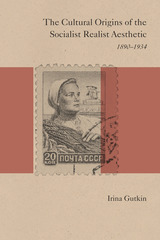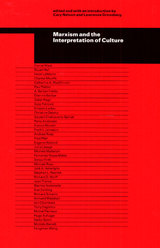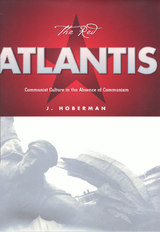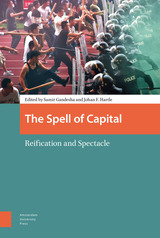5 books about Communist aesthetics

The Cultural Origins of the Socialist Realist Aesthetic
1890-1934
Irina Gutkin
Northwestern University Press, 1999
The past fifteen years have seen an important shift in the way scholars look at socialist realism. Where it was seen as a straitjacket imposed by the Stalinist regime, it is now understood to be an aesthetic movement in its own right, one whose internal logic had to be understood if it was to be criticized. International specialists remain divided, however, over the provenance of Soviet aesthetic ideology, particularly over the role of the avant-garde in its emergence.
In The Cultural Origins of the Socialist Realist Aesthetic, Irina Gutkin brings together the best work written on the subject to argue that socialist realism encompassed a philosophical worldview that marked thinking in the USSR on all levels: political, social, and linguistic. Using a wealth of diverse cultural material, Gutkin traces the emergence of the central tenants of socialist realist theory from Symbolism and Futurism through the 1920s and 1930s.
In The Cultural Origins of the Socialist Realist Aesthetic, Irina Gutkin brings together the best work written on the subject to argue that socialist realism encompassed a philosophical worldview that marked thinking in the USSR on all levels: political, social, and linguistic. Using a wealth of diverse cultural material, Gutkin traces the emergence of the central tenants of socialist realist theory from Symbolism and Futurism through the 1920s and 1930s.
[more]

Marxism and the History of Art
From William Morris to the New Left
Edited by Andrew Hemingway
Pluto Press, 2006
This unique book is the first comprehensive introduction to Marxist approaches to art history. Although the aesthetic was a crucial part of Marx and Engels's thought, they left no programmatic statements on the arts. In meeting this gap, succeeding Marxists have inevitably devised a wide variety of approaches to both aesthetics and the writing of art's history. Although there is an abundant scholarship on Marxist approaches to literature, the historiography of the visual arts from a Marxist perspective has been largely neglected despite the large impact it has had within academic art history since 1970.
This book encompasses a range of influential thinkers and historians from the period of the Second and Third Internationals down to the heyday of the New Left. Among the individuals it covers are William Morris, Mikhail Lifshits, Frederick Antal, Francis Klingender, Max Raphael, Meyer Schapiro, Walter Benjamin, Henri Lefebvre, and Arnold Hauser. It also includes three essays addressing the heritage of the New Left. In the spirit of Marxism itself, the authors interpret the achievements and limitations of Marxist art history in relation to the historical and political circumstances of its production and provide an indispensable and lucid introduction to contemporary radical practices in the field.
This book encompasses a range of influential thinkers and historians from the period of the Second and Third Internationals down to the heyday of the New Left. Among the individuals it covers are William Morris, Mikhail Lifshits, Frederick Antal, Francis Klingender, Max Raphael, Meyer Schapiro, Walter Benjamin, Henri Lefebvre, and Arnold Hauser. It also includes three essays addressing the heritage of the New Left. In the spirit of Marxism itself, the authors interpret the achievements and limitations of Marxist art history in relation to the historical and political circumstances of its production and provide an indispensable and lucid introduction to contemporary radical practices in the field.
[more]

Marxism and the Interpretation of Culture
Edited by Cary Nelson and Lawrence Grossberg
University of Illinois Press, 1988

The Red Atlantis
J. Hoberman
Temple University Press, 2000
For most of the twentieth century, American and European intellectual life was defined by its fascination with a particular utopian vision. Both the artistic and political vanguards were spellbound by the Communist promise of a new human era -- so much so that its political terrors were rationalized as a form of applied evolution and its collapse hailed as the end of history.
The Red Atlantis argues that Communism produced a complex culture with a dialectical relation to both modernism and itself. Offering examples ranging from the Stalinist show trial to Franz Kafka's posthumous career as a dissident writer and the work of filmmakers, painters, and writers, which can be understood only as criticism of existing socialism made from within, The Red Atlantis suggests that Communism was an aesthetic project -- perhaps the aesthetic project of the twentieth century.
Considering the meaning of Communist culture in its absence, these essays sift through the wrecking age of Marxist fantasy to exhibit exhumed fossils (Socialist Realist canvases), vanished monuments (the Berlin Wall), imaginary territories (the Jewish state, Birobidzhan), and ideological memories (the Crime of the Century). The Cold War notwithstanding, the greatest of these exotic artifacts and obsolete scenarios is the lost Communist utopia, which, in fact, never existed.
The Red Atlantis argues that Communism produced a complex culture with a dialectical relation to both modernism and itself. Offering examples ranging from the Stalinist show trial to Franz Kafka's posthumous career as a dissident writer and the work of filmmakers, painters, and writers, which can be understood only as criticism of existing socialism made from within, The Red Atlantis suggests that Communism was an aesthetic project -- perhaps the aesthetic project of the twentieth century.
Considering the meaning of Communist culture in its absence, these essays sift through the wrecking age of Marxist fantasy to exhibit exhumed fossils (Socialist Realist canvases), vanished monuments (the Berlin Wall), imaginary territories (the Jewish state, Birobidzhan), and ideological memories (the Crime of the Century). The Cold War notwithstanding, the greatest of these exotic artifacts and obsolete scenarios is the lost Communist utopia, which, in fact, never existed.
[more]

The Spell of Capital
Reification and Spectacle
Edited by Samir Gandesha and Johan F. Hartle
Amsterdam University Press, 2017
This book explores the tradition, impact, and contemporary relevance of two key ideas from Western Marxism: Georg Lukács's concept of reification, in which social aspects of humanity are viewed in objectified terms, and Guy Debord's concept of the spectacle, where the world is packaged and presented to consumers in uniquely mediated ways. Bringing the original, yet now often forgotten, theoretical contexts for these terms back to the fore, Johan Hartle and Samir Gandesha offer a new look at the importance of Western Marxism from its early days to the present moment-and reveal why Marxist cultural critique must continue to play a vital role in any serious sociological analysis of contemporary society.
[more]
READERS
Browse our collection.
PUBLISHERS
See BiblioVault's publisher services.
STUDENT SERVICES
Files for college accessibility offices.
UChicago Accessibility Resources
home | accessibility | search | about | contact us
BiblioVault ® 2001 - 2024
The University of Chicago Press









